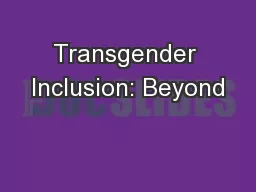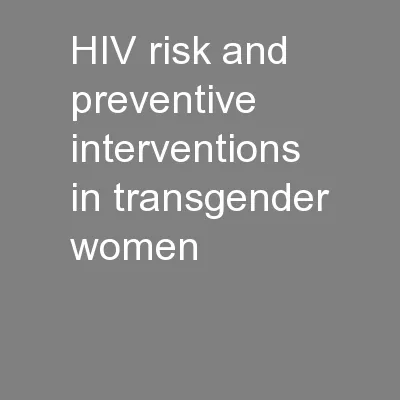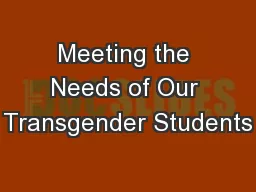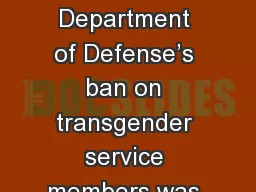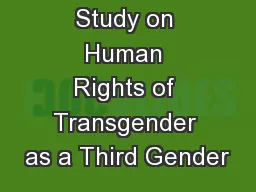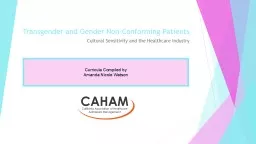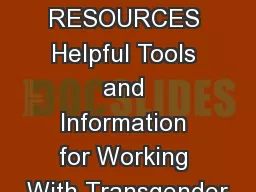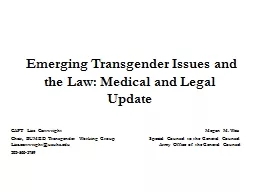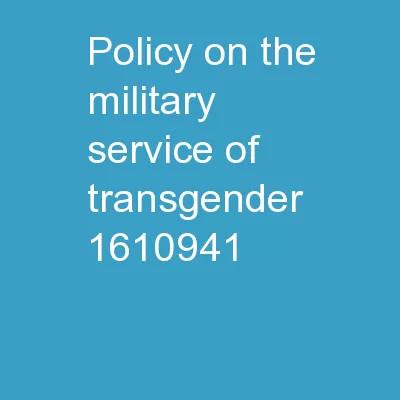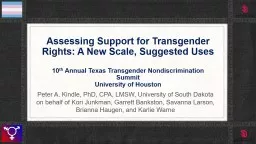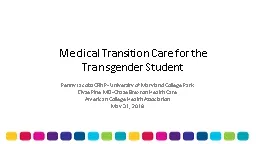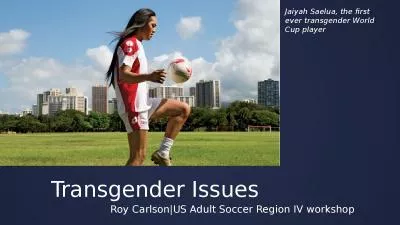PPT-Transgender Inclusion: Beyond
Author : giovanna-bartolotta | Published Date : 2018-11-05
the CisGender Binary Goals for Today Discuss and understand how gender operates in our society Develop a better understanding about both the unique needs of transgender
Presentation Embed Code
Download Presentation
Download Presentation The PPT/PDF document "Transgender Inclusion: Beyond" is the property of its rightful owner. Permission is granted to download and print the materials on this website for personal, non-commercial use only, and to display it on your personal computer provided you do not modify the materials and that you retain all copyright notices contained in the materials. By downloading content from our website, you accept the terms of this agreement.
Transgender Inclusion: Beyond: Transcript
Download Rules Of Document
"Transgender Inclusion: Beyond"The content belongs to its owner. You may download and print it for personal use, without modification, and keep all copyright notices. By downloading, you agree to these terms.
Related Documents

